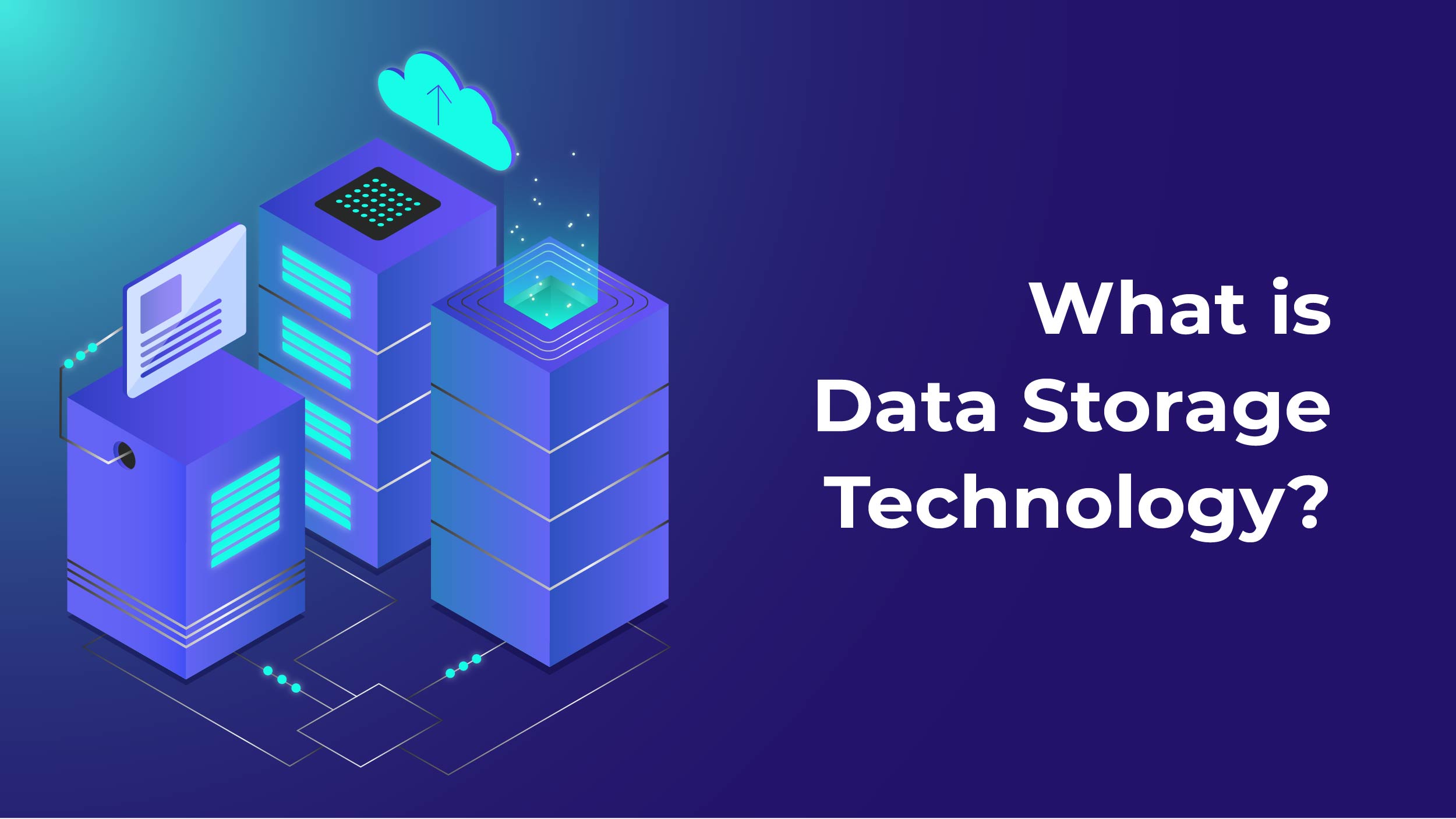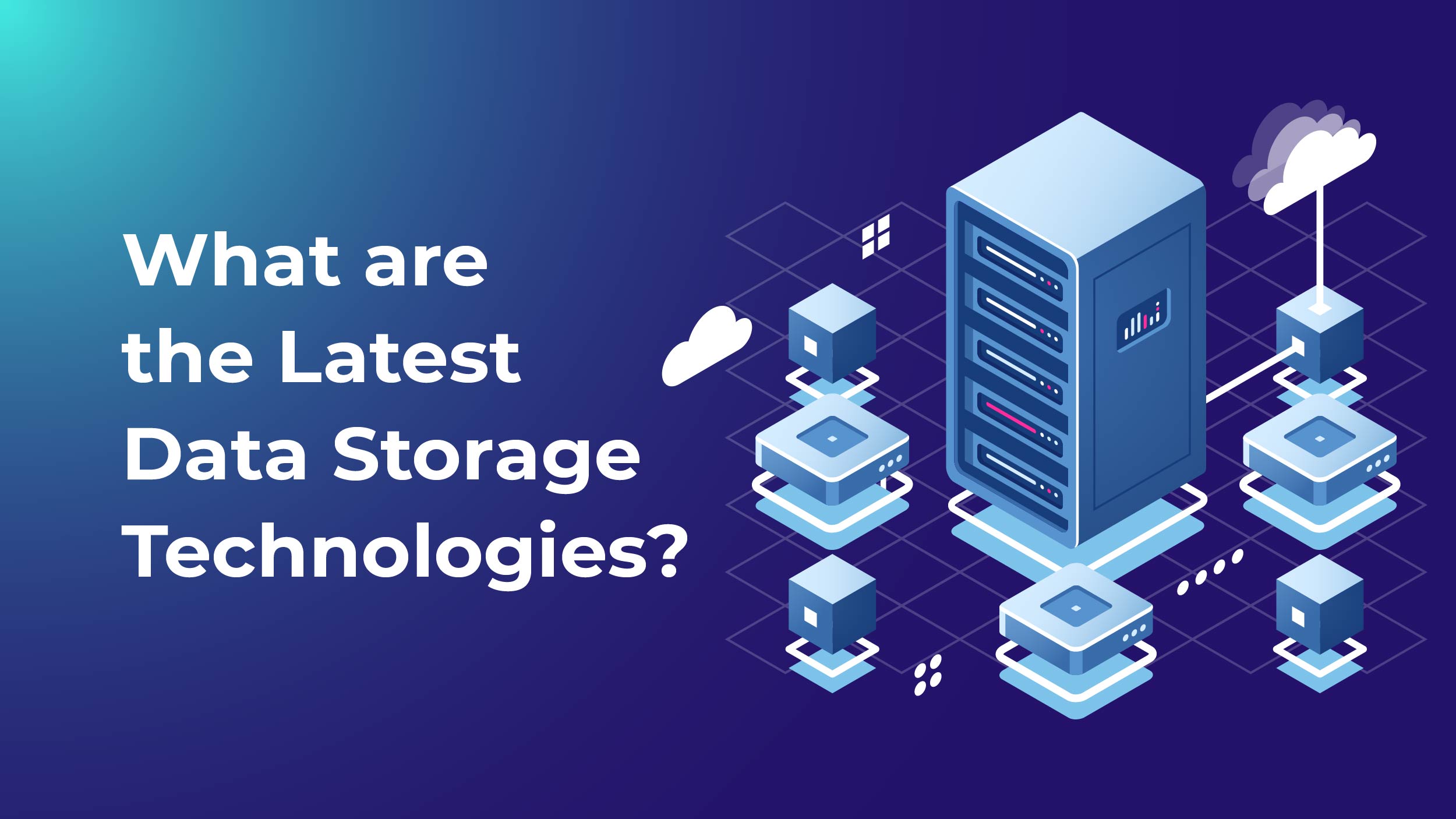In today’s digital age, where vast amounts of data are generated every second, efficient and reliable data storage technologies play a crucial role. From personal photos and videos to business-critical information, the need for robust storage solutions has never been greater. According to a study by IDC, the global datasphere is projected to reach a staggering 175 zettabytes by 2025, which highlights the exponential growth in data volume. In this fast-paced technological landscape, organizations and individuals alike are seeking innovative storage technologies to securely store, access, and manage their valuable data. Let’s explore the fascinating world of data storage technologies and how they are shaping our digital future
What is Data Storage Technology?

Data storage technologies refer to the various methods and technologies used to store and manage data. These technologies encompass a wide range of hardware and software solutions that enable the storage, retrieval, and management of data. Here are some commonly known data storage technologies:
-
File Storage:
File storage is a hierarchical storage methodology used to organize and store data. Data is stored in files, which are organized in folders and directories.
-
Block Storage:
Block storage is a technology used to store data in blocks. Each block has a unique identifier and is stored separately. Block storage is favored for computing situations that require fast, efficient, and reliable data transfer.
-
Object Storage:
An alternative to managing data as files or blocks, object storage handles data as objects. Each object contains data, metadata, and a unique identifier. Object storage is highly scalable and suitable for storing large amounts of unstructured data.
-
Cloud Storage:
It is a mode of computer data storage where digital data is stored on servers in off-site locations. It is maintained by a third-party provider responsible for hosting, managing, and securing the data. Cloud storage offers scalability and accessibility via public or private internet connections.
-
Network-Attached Storage (NAS):
NAS is a dedicated file-level data storage solution that provides centralized storage accessible to multiple clients and servers over a network. It is commonly used for file sharing, data backup, and multimedia streaming.
-
Storage Area Network (SAN)
: SAN is a high-speed network that connects storage devices to servers, allowing for block-level data storage and retrieval. SANs are often used in enterprise environments for data-intensive applications and virtualization.
-
Solid-State Drives (SSDs):
SSDs are storage devices that store data on flash memory. Compared to conventional hard disc drives (HDDs), they provide faster data access, lower power consumption, and greater reliability.
-
Tape Storage:
This involves storing data on magnetic tape cartridges. It is commonly used for long-term archival and backup purposes due to its cost-effectiveness and durability.
These are just a few examples of data storage technologies. The choice of storage technology depends on factors such as performance requirements, scalability, cost, and data access patterns. Organizations often use a combination of different storage technologies to meet their specific needs.
What are the Latest Data Storage Technologies?

The field of data storage is constantly evolving, with new technologies emerging to meet the increasing demands for storage capacity, performance, and efficiency. Here are some of the latest storage technologies:
- PCIe Gen 4 and Gen 5: PCIe (Peripheral Component Interconnect Express) is a high-speed interface used to connect devices like storage drives to a computer’s motherboard. PCIe Gen 4 and Gen 5 offer faster data transfer rates, enabling improved storage performance.
- Compute Express Link (CXL) 2.0: CXL is an open industry standard that allows for high-speed communication between CPUs and other devices, such as storage devices. CXL 2.0 provides increased bandwidth and lower latency, enhancing storage system performance.
- Switchless Interconnect: This refers to a storage architecture that eliminates the need for switches in the storage network. It simplifies the storage infrastructure, reduces latency, and improves overall system performance.
- Data Processing Units (DPUs): DPUs are specialized processors designed to offload and accelerate data-intensive tasks, such as storage and network processing. DPUs can enhance storage performance, security, and efficiency.
- DNA Storage: It is an emerging technology that uses DNA molecules to store digital data.DNA has the capacity to store enormous amounts of info in a portable and long-lasting format. Ongoing research studies are focused on developing efficient methods for reading and writing data to DNA.
- Helium Drives: Helium-filled hard disk drives (HDDs) offer higher storage capacities and lower power consumption compared to traditional air-filled HDDs. Helium reduces friction and allows for more platters to be stacked in the drive, increasing storage density.
- Shingled Magnetic Recording (SMR): SMR is a technique used to increase storage capacity in HDDs. It overlaps tracks on the disk, enabling more data to be stored in the same physical space. SMR drives are suitable for write-once, read-many (WORM) applications and archival storage.
- Large Memory Servers: These servers are systems that have a significantly higher RAM compared to traditional servers. These servers can store and process large datasets entirely in memory, improving performance for data-intensive applications.
- Rack Scale Design: This design is an architecture that disaggregates compute, storage, and network resources in a data center. It allows for more flexible and scalable storage configurations, enabling efficient resource utilization and management.
- 5D Optical Storage: This is an experimental technology that uses femtosecond laser pulses to encode data in nanostructured glass. This technology has the potential to store vast amounts of data in a highly durable and long-lasting medium.
These are just a few examples of the latest storage technologies. It’s important to note that the field is evolving rapidly, and innovations continue to emerge. Organizations and researchers are constantly exploring new ways to improve storage capacity, performance, reliability, and efficiency.
Winding Up
Data storage technologies have evolved significantly over the years, offering various solutions to meet the increasing demands of storing and managing data. From traditional hard disk drives to solid-state drives, cloud storage, and emerging technologies like DNA storage, the options are diverse and ever-expanding. These advancements have not only enhanced storage capacities but also improved data access speeds, reliability, and scalability. With continuous innovation in the field, we can expect further breakthroughs and transformative solutions that will shape the future of data storage.




